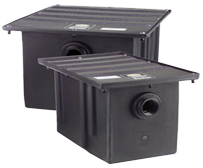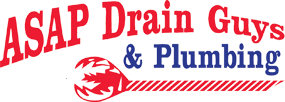
Grease Trap Cleaning
If you manage or own a facility that’s involved in food preparation or serving and cleanup, there’s a good chance you’ve learned about grease traps the hard way. Neglecting them for even just a couple of weeks can lead to big problems; if more than one kitchen drain is backed up, the grease trap is the most likely suspect.
Even with regular use of a drain maintainer / cleaner, traps should be professionally cleaned at least once a month. Anything less than a thorough cleaning can lead to odor and sanitation issues. Although called a grease trap, they also trap oils and solids. Cleaning may seem simple and straightforward — just scoop out the crud. But a professional company, such as ASAP Drain Guys & Plumbing in San Diego, can assure thorough cleaning without damaging the trap and will avoid and correct problems before a back up disrupts your business or an improperly maintained trap results in a health code violation.
FOGS?
That’s an acronym for everything a “grease” trap is intended to trap and keep from going into the sewer: Fatty-Oils, Grease, and Solids. The trap slows down the water’s flow in order to let these components cool down and separate. These materials need to be removed regularly or their accumulation will block the trap causing a drain back up.
Cleaning Grease Traps
Cleaning out a grease trap involves a lot more than just scooping out enough sludge to keep the water flowing freely. All FOGS must be removed, as older material is the main cause of odor and sanitation issues. Additionally, the process includes measurements, inspection, and the occasional replacement of parts such as seals and screens.
There are many different types, sizes, and designs, each presenting different cleaning details and got-ya’s. The three main types are: passive grease traps found under 3-compartment sinks, larger interceptors, and GRDs (Grease Recovery Devices) that skim grease from the surface.
Here’s a brief outline of the typical main steps, omitting many details.
1. Carefully pry off the lid, being careful not to damage gaskets just under the cover.
2. Before cleaning, measure the level of grease and oil and record them for the legally required EPA (Environmental Protection Agency) FOG report.
3. As you continue to disassemble and clean the trap, carefully not what you’re removing so that you can replace it properly.
4. Remove the standing water and then the solid waste, scraping the lid, baffles, and sides.
5. Clean any bypass vent.
6. Wash everything with soap and room-temperature water, using a pot scrubber as needed.
7. Flush the screens and various other parts.
8. Inspect any intake, outflow, and crossover Ts plus anything that might affect proper operation of the trap.
9. Reinstall all parts and the lid.
10. Copy and file the FOG report.
That’s a lot to expect from a janitorial staff or even your facilities guy or gal.
Call the Pros
Bringing in a professional to make sure that everything is done correctly will save you money in the long run by avoiding expensive emergency service for blockages and overflows, not to mention expenses associated with the disruption of your business and health-code violations. ASAP Drain Guys & Plumbing can tailor a maintenance program to the the exact type and size of your operation and take an important item off your list of things to attend to. New health codes as well as old or poor-quality traps may necessitate a replacement or upgrade. We’re also proficient in grease trap installation.

